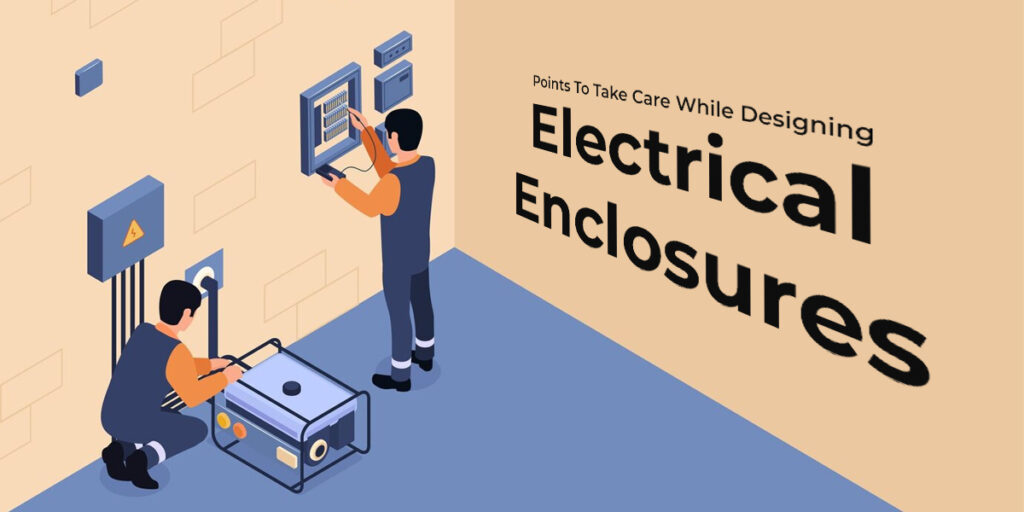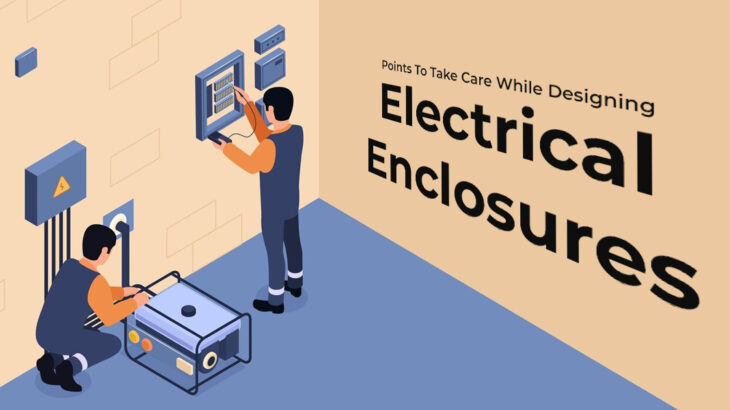
Designing electrical enclosures involves considerations for safety, functionality, and compliance with standards. Here are some key points to take care of during the design process:
Safety Standards Compliance: Ensure compliance with relevant safety standards (like NEMA, UL, IEC) to meet industry-specific requirements.
Environmental Conditions: Consider the environmental conditions where the enclosure will be placed—temperature, humidity, corrosive elements, etc. Choose materials and seals that can withstand these conditions.
Proper Sizing: Ensure the enclosure size is appropriate to accommodate all components, leaving enough space for maintenance, future upgrades, and proper heat dissipation.
Heat Dissipation: Provide for adequate ventilation or cooling systems within the enclosure to prevent overheating of components.
Cable Management: Plan for efficient cable routing and management to avoid clutter and interference between wires and components.
Accessibility: Design for easy access to components for maintenance and troubleshooting purposes. Include features like hinged doors, removable panels, etc.
Protection against Hazards: Implement measures to protect against ingress of dust.
Standards to design electrical enclosures – NEMA rating, IP rating and UL Ratings
NEMA Ratings: Issued by the National Electrical Manufacturers Association, NEMA ratings classify enclosures based on their ability to protect against environmental conditions. The ratings range from NEMA 1 to NEMA 13, with each number indicating specific protections. For instance:
NEMA 1: Provides basic protection against ingress of solid foreign objects (like fingers or tools) and provides a degree of protection against light splashing of water. Typically used indoors in relatively clean, dry environments.
NEMA 3: Protects against weather hazards, including falling dirt, rain, sleet, and windblown dust. Suitable for outdoor use.
NEMA 4: Designed for indoor or outdoor use where equipment needs protection against water splashing, hose-directed water, and the ingress of solid foreign objects. Commonly used in industrial environments.
NEMA 4X: Similar to NEMA 4 but also includes corrosion resistance. Suitable for harsher environments where corrosion might occur due to exposure to chemicals or saltwater.
NEMA 6: Provides protection against temporary water immersion.
NEMA 12: Protects against dust, dirt, oil, and dripping water. Suitable for indoor industrial environments where protection against contaminants is needed.
NEMA 13: Provides protection against the ingress of dust, oil, and non-corrosive liquids. Often used in industrial applications where protection from contaminants is required.
IP Ratings (Ingress Protection): The IP rating system specifies the degree of protection provided by an enclosure against solids and liquids. It’s represented by two digits:
The first digit signifies protection against solids (e.g., dust), rated from 0 to 6.
The second digit indicates protection against liquids (e.g., water), rated from 0 to 8.
For example, an IP67 rating indicates complete protection against dust (6) and temporary immersion in water up to 1 meter (7).
UL Ratings: UL (Underwriters Laboratories) provides safety certifications for various electrical devices, including enclosures. These ratings ensure products comply with specific safety standards. For instance:
UL 50: Covers enclosures for electrical equipment; specifies requirements for construction, performance, and protection.
UL 508A: Pertains to the construction and performance of industrial control panels.
Adhering to these standards helps ensure that electrical enclosures are appropriately designed and constructed to protect against environmental factors, promote safety, and comply with industry regulations. The choice of the rating or standard depends on the specific needs of the application and the environment where the enclosure will be used.
Sunstream has years of experience in designing enclosures for electrical applications through PCB design services. We have successfully completed designing hundreds of enclosures with different levels of protection, safety and application. Our 3D modeling services team has been working with several customers for developing their electrical enclosures. Talk to us today to know how you can reduce the cost of your electrical enclosures.




 +1.585.935.7123
+1.585.935.7123 +91-804-148-6861
+91-804-148-6861